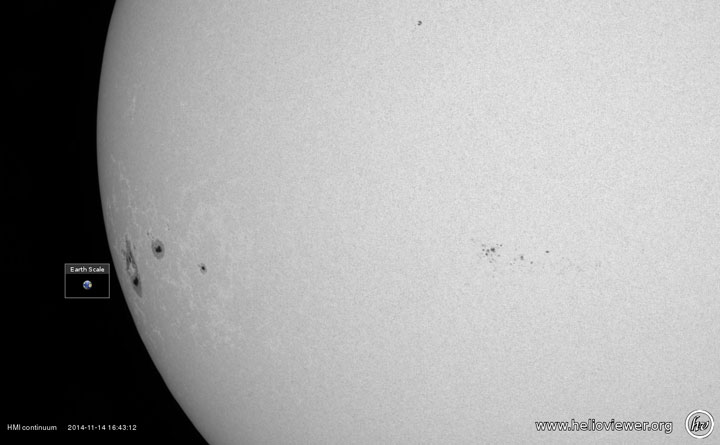TORONTO – The sunspot that was the largest astronomers had seen in almost 30 years has turned back towards Earth.

Though not as big as it was when it first turned towards us two weeks ago, it is still significant.
The sunspot — designated 2192 at the time — delivered several X-class flares in its previous appearance. These are the most powerful flares released by the sun and can cause radio blackouts. Most often, they are accompanied by coronal mass ejections (CME) that take several days to arrive. When they do, the particles interact with Earth’s magnetosphere and can create beautiful auroral displays, or northern lights.
Except in the case of 2192, it didn’t, which was unusual.
“I wouldn’t have bet you we could have half a dozen X-class flares and not get any radiation storm or any significant CME activity,” Bob Rutledge, lead forecaster for NOAA’s Space Weather Prediction Center said at the time.
The sunspot was easily visible with eclipse glasses and was very photogenic during the Oct. 23 solar eclipse which was visible across Canada.
As to whether or not the new sunspot — now called 2209 — will produce any significant flares or CMEs, it’s just a case of wait-and-see.
The sunspot will continue to rotate across the sun over the next few days.
Stay tuned to GlobalNews for updates.



Comments